CES 2007 - Part II: IPTV on Xbox 360, iPhone and DTX
by Anand Lal Shimpi & Manveer Wasson on January 16, 2007 12:00 AM EST- Posted in
- Trade Shows
AMD’s DTX Form Factor
As we talk about convergence and the future of the two combined industries, it's far too easy just to focus on the CE side of things - after all, gadgets tend to look cooler than the parts that make them up. That being said, today's story isn't all about cell phones and streaming video.
An unexpected announcement at CES was AMD’s commitment to develop a new open standard for small form factor computers: DTX. One of the major reasons for AMD's acquisition of ATI was to get into the consumer electronics business, which ATI happened to be reasonably successful in thanks to its DTV chips and console GPU designs. The intent to develop a new small form factor specification fits very well with AMD's desire to break into the CE market, as CE devices don't tend to be in large ATX cases.
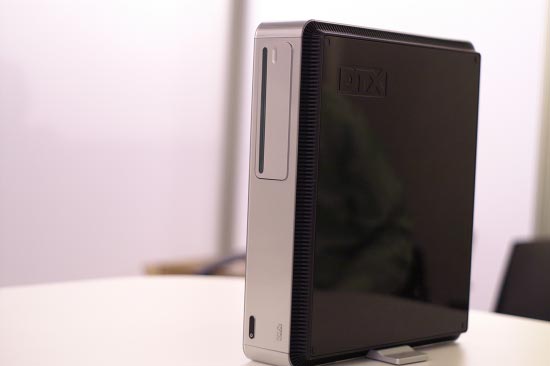
AMD's DTX demonstration chassis
If this sort of announcement sounds familiar at all, it’s because Intel tried to do the very same thing with BTX not too long ago. For years it seemed as though a small form factor standard for PCs was inevitable; we were seeing many proprietary form factors enter the marketplace to fill a very large void left by ATX. Companies like Shuttle profited tremendously from the lack of a small form factor standard as they were able to deliver cases and motherboards that were significantly smaller than anything you could get with ATX. But even during the earliest days of proprietary SFF systems, it was clear that a standard was needed.
The entire PC industry as we now know it was built upon standards, so consumers would have choice in their components, not to mention a guaranteed upgrade path. If you bought a proprietary SFF system, you were married to the motherboard you bought with the system; if you wanted an upgrade, you needed to buy a new SFF. It’s a great business proposition for the manufacturers, but not so great for the consumers.
Intel introduced the BTX specification and its three variants (standard, micro-BTX and pico-BTX) back in 2003, but since then there has been limited acceptance of the standard. Motherboard and chassis manufacturers were extremely slow to adopt the BTX spec, eventually pulling virtually all support for the standard. AMD on the other hand was fairly adamant about why it never really embraced BTX; AMD insisted that BTX was created first to cope with the rising power demands of Intel’s Pentium 4 line of processors, and only address the need for small form factor PCs as a secondary goal. While we’ve seen one AMD BTX board on display, the vast majority of BTX motherboards were Intel-only.
Interest in BTX has faded considerably over the past four years, particularly in the channel market. Even Intel's own motherboard lineup will phase out BTX support starting in Q2 of this year. Instead of throwing its weight behind a failed standard, AMD set out to create a new small form factor specification with the help of its partners.
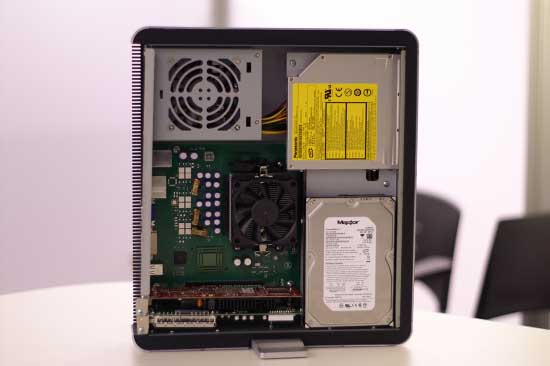
A DTX mockup
AMD doesn’t intend DTX to replace ATX, but rather supplement it for manufacturers and consumers interested in a smaller form factor. DTX will use the same standoff hole pattern as ATX, so DTX motherboards will work in ATX cases. Going one step further, mini-ITX motherboards will work in DTX cases, which will help leverage one of the more popular form factors in the SFF marketplace. There's also a mini-DTX specification that AMD is working towards developing for even smaller form factor applications.
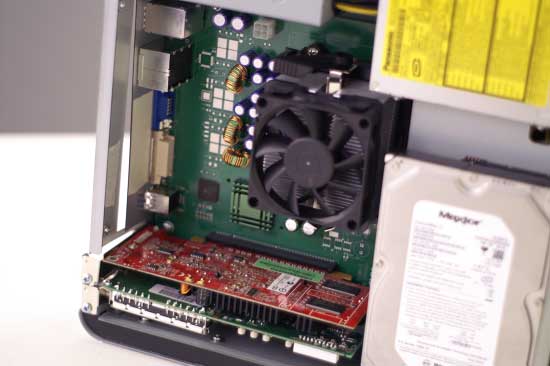
Note the use of half-height expansion cards, and fairly low profile CPU heatsink
AMD plans on having the initial draft of its DTX specification ready sometime this quarter, although we didn’t get any solid details at the show itself. AMD did mention that the DTX specification would be designed for CPUs with a TDP less than or equal to 65W, which happens to be the TDP for all of AMD's newly announced 65nm CPUs.
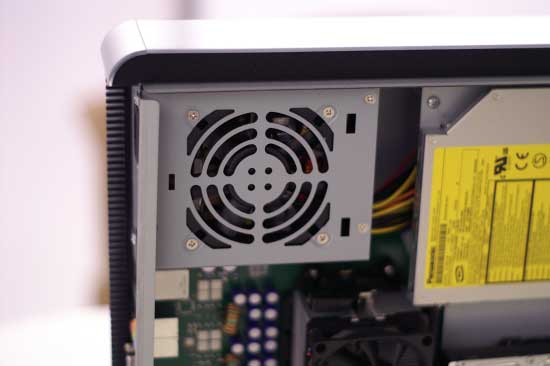
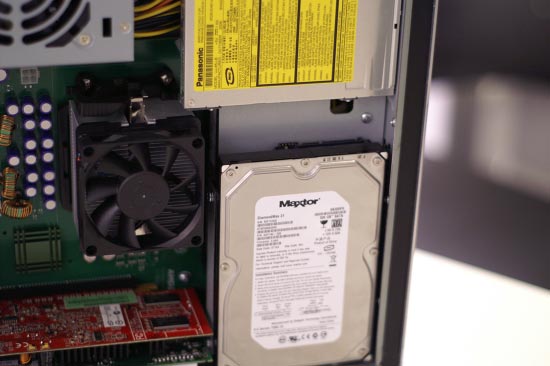
We asked AMD why it would bother with a new standard when a small form factor standard already existed with BTX, but we weren't able to get a satisfactory answer other than the usual company line of: BTX was designed to fix an Intel thermal problem, DTX is an open standard for small form factor PCs.
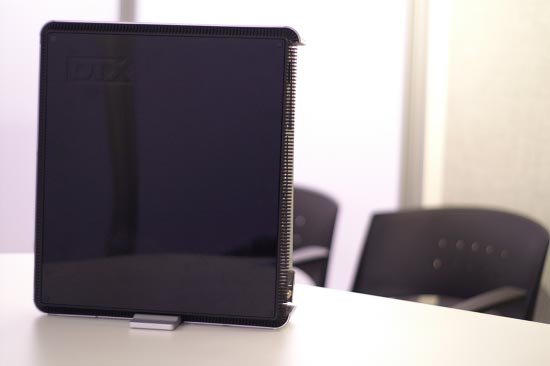
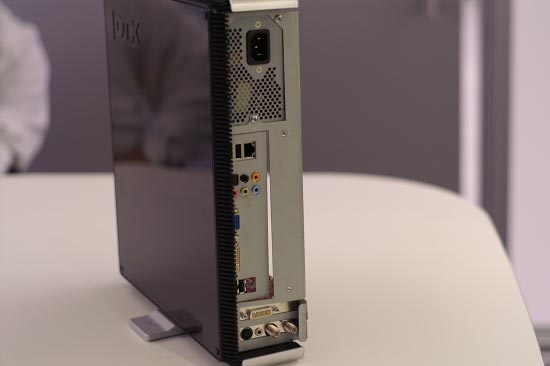
Despite the me-too approach that AMD appears to be taking with DTX, it's already looking to have a higher potential for success based on the simple fact that you can use DTX motherboards in ATX cases. By not having to create two different motherboards, supporting DTX from a manufacturer's standpoint is far less of a risk. The real question is whether or not AMD will be able to put enough resources behind DTX to make it a widely accepted industry standard.










15 Comments
View All Comments
Rock Hydra - Wednesday, January 17, 2007 - link
I hope not.
archcommus - Tuesday, January 16, 2007 - link
The article speaks largely about waiting for a company to do convergence perfectly, to combine the PC and TV seamlessly and easily. Am I missing something here or can I do this all on my own very easily? I don't own my own home, but if I did, I would have a server PC with all of my content, PCs in each room, a PC powering each TV (or monitor, same difference really), with gigabit ethernet connecting it all. Each PC powering a TV would of course have a tuner card installed and PVR software like SageTV. Bingo - every TV in my house can now watch live TV, function as a PVR/TiVo-like device, and also view content stored on any PC in my home since they're all on one LAN. I can also play my music, view my photos, and even browse the internet if I wanted at any TV in the house.There. Did I just solve the problem? :P I'm kidding of course, I just don't get what I'm missing here.
Wellsoul2 - Thursday, January 18, 2007 - link
IPTV-But you've got to pay..same old same old.Right now my cable is connected to my computer and I get over the air HDTV.
My computer does DVR..all this with a cheap tuner card.
Seems pretty lame to use an XBOX when you have a PC that can adjust the
picture etc and play videos from Yahoo already.
My TV is my second monitor already.
Itunes downloaded stuff is ok for tv shows..movies are pricy.
Araemo - Tuesday, January 16, 2007 - link
"The real question is whether or not AMD will be able to put enough resources behind DTX to make it a widely accepted industry standard."You know, they really might not have to. Why? Same reason ATX actually caught on: Cases can be built VERY EASILY to support both DTX and ATX, or Mini-ITX and DTX.. allowing case manufacturers to hop on board for almost no cost.
Motherboard manufacturers don't even have to wait for the cases to be available, since the DTX boards will fit on ATX cases... So I'd expect, if AMD doesn't piss anyone off, and makes nice with ASUS and the other tier-1 mobo manufacturers... smaller DTX boards might replace mini-ATX if they have any significant improvements. (What I'm trying to say is: What is the risk if ASUS makes their tiny board with only one PCI slot DTX or mini-ATX? There should be none, if the board was already designed to be that cheap and restricted for low costs... The board will still work in ATX cases so they can advertise it as dual compatibility.)
RogueSpear - Tuesday, January 16, 2007 - link
I DVR just about everything that I watch. With the amount of money I throw at Time Warner I feel justified in blowing past all of the commercials, plus I like to watch things when it's convenient to me. So can I keep on playing a game at full speed (or for that matter at all) while this thing is recording one or two HD streams? Or do I need to put the controller down because it's time to record The Office?glennpratt - Tuesday, January 16, 2007 - link
Divx != Pirated; and vise versa Anand. I get the point, but that mentality doesn't help.If only it were easy to encode every movie and TV show I own or have recorded to a decent format and have everybody play it. But no! Movie companies want to throw a wrench in the works and software developers want to divide up the broken works into sovereign territories.
PrinceGaz - Tuesday, January 16, 2007 - link
In fact these days most pirated content is encoded with XviD rather than DivX. Admittedly there isn't really much difference between them as they are both implementations of MPEG4 ASP, and on a computer you can play back DivX encoded files using the XviD decoder and vice-versa.mino - Tuesday, January 16, 2007 - link
Well, for the most part, I do NOT play the movies I bought! I just encode the to some high-quality XviD, put on home NAS and then play whenever I want (without all of the commercials and other things I paid for while not eanting them).AFAIK most friend do it this way so I really see no reason for going DRM...
However that DTX thingie seems sweet. Especially combined with Fusion...
Goty - Tuesday, January 16, 2007 - link
If you look at the placement of the northbridge relative to the memory slots (find pictures elsewhere on the web for a full shot of the board), the CPU socket sits right between the two. What does this mean? This means that there's pretty much no way that this form factor will work with any CPU that doesn't utilize and onboard memory controller, i.e. this pretty much leaves Intel out of it.Araemo - Tuesday, January 16, 2007 - link
Besides the fact that you can probably relocate both mobo and northbridge if your northbridge is your memory controller - Intel is moving to an on-die memory controller too, so that is fairly forward-thinking.